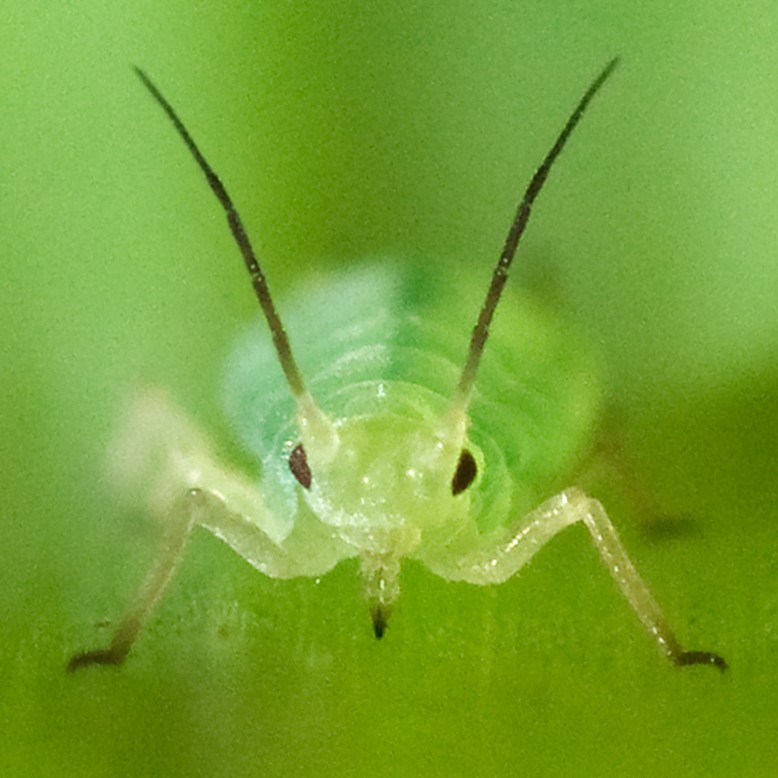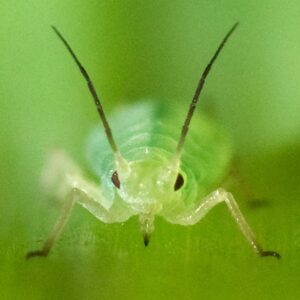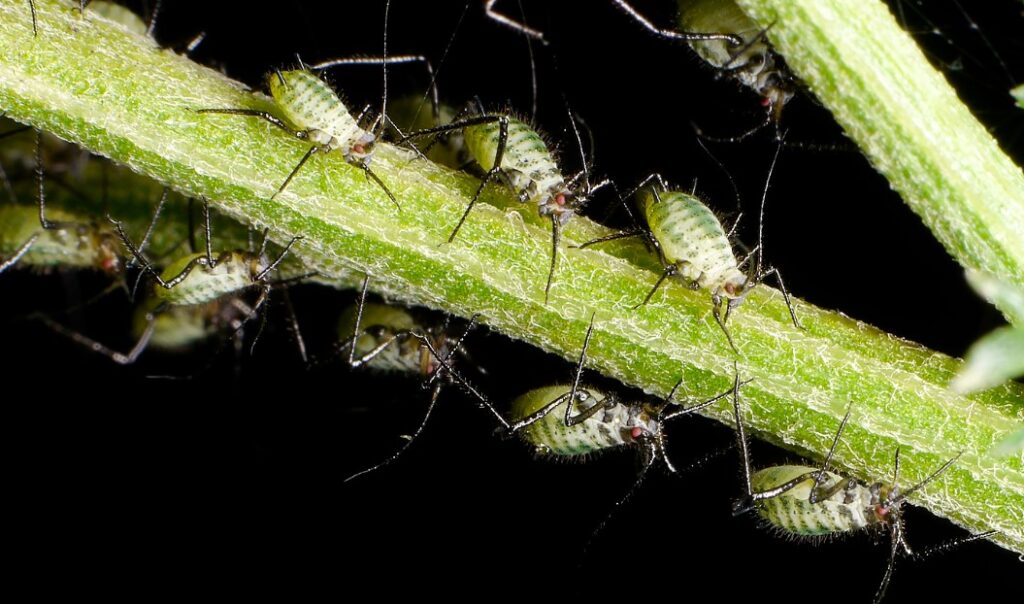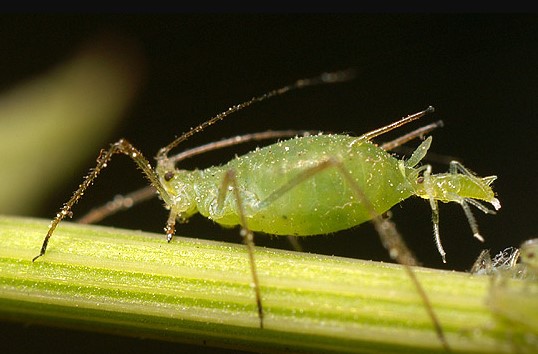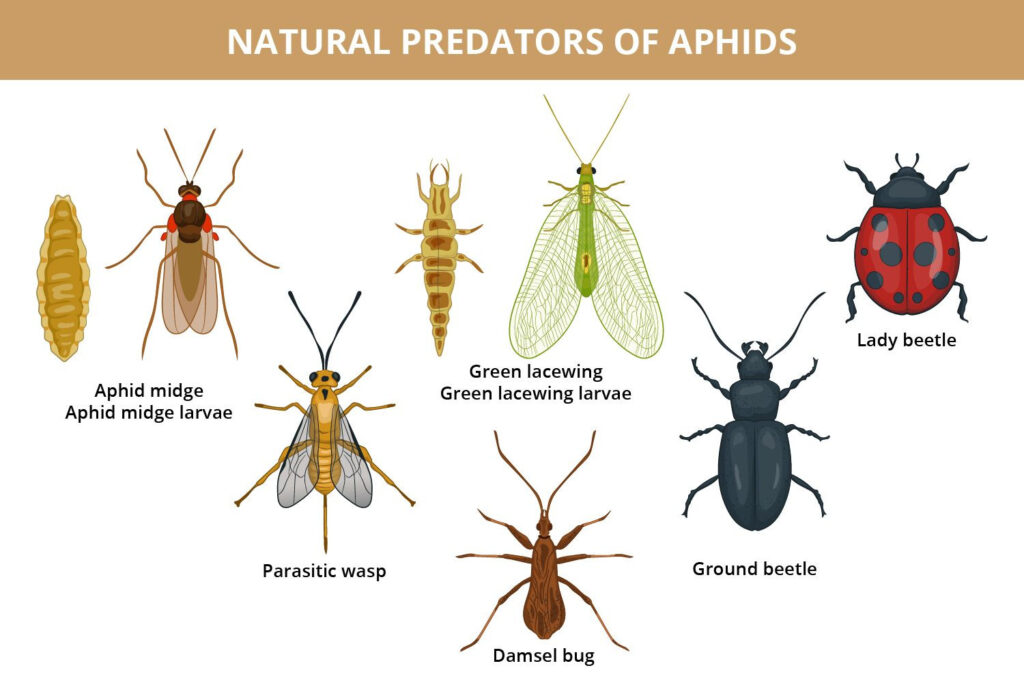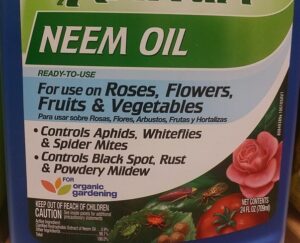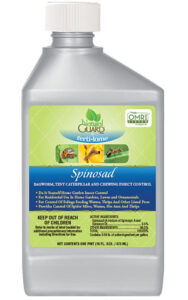Aphids, also known as greenflies and blackflies, are soft-bodied insects that can wreak havoc on cannabis plants. With their ability to reproduce rapidly and their widespread distribution, aphids can become a major pest in cannabis cultivation. In this article, we will explore the different types of aphids that can infest cannabis plants, how to identify them, the damage they can cause, and most importantly, how to prevent and control aphid infestations.
Types of Aphids in Cannabis
Aphids come in various colors and sizes depending on their stage of life and habitat. They can appear white, green, yellow, black, brown, and even red. Identifying aphids can be challenging since they undergo different stages of development. Adult aphids are usually round and bigger, while the younger nymphs are smaller and thinner. It’s important to note that if you spot white bugs resembling tiny fat worms, you may actually be dealing with thrips, another common cannabis pest.
Aphids are small, sap-sucking insects that can affect a variety of plants, including cannabis. They can cause damage by feeding on the plant’s sap and transmitting certain plant viruses. While there isn’t an exhaustive list specific to cannabis aphids, here are some common aphid species that may potentially infest cannabis plants:
- Green Peach Aphid (Myzus persicae)
- Cotton Aphid (Aphis gossypii)
- Foxglove Aphid (Aulacorthum solani)
- Melon Aphid (Aphis gossypii)
- Potato Aphid (Macrosiphum euphorbiae)
- Rose Aphid (Macrosiphum rosae)
- Bean Aphid (Aphis fabae)
- Black Bean Aphid (Aphis fabae var. fabae)
- Cowpea Aphid (Aphis craccivora)
- Thistle Aphid (Brachycaudus cardui)
- Greenbug (Schizaphis graminum)
- Blue Alfalfa Aphid (Acyrthosiphon kondoi)
- Brown Ambrosia Aphid (Uroleucon ambrosiae)
- Russian Wheat Aphid (Diuraphis noxia)
- Pea Aphid (Acyrthosiphon pisum)
It’s worth mentioning that aphids can also have wings. These winged aphids can be dark or pale in color, ranging from green to red or yellow. However, regardless of their color, winged aphids generally have a similar body shape to their wingless counterparts. Some aphids may appear differently, such as young aphids that appear red instead of green. In Europe, for example, aphids may be pale green with dark legs and red eyes.
Identifying Aphids in Cannabis Plants
Aphids primarily feed on the leaves of cannabis plants by piercing them with their sucking mouthparts and extracting the plant’s juices. They tend to form colonies on the undersides of stems and leaves. If left unchecked, a heavy infestation of aphids can cause the leaves to turn yellow, wilt, and suffer from excessive stress and damage.
One telltale sign of aphid infestation is the presence of honeydew, a sweet substance that aphids excrete. Honeydew can attract a type of fungus called sooty mold, which can grow on the plant’s leaves and branches, turning them black. This mold not only discolors the plants but can also make the buds unsafe to smoke. Additionally, honeydew can attract other insects, such as ants, further complicating the issue.
Causes of Aphids in Cannabis
Aphids can infest cannabis plants when winged aphids, often referred to as “colonizers,” land on the plant and lay eggs. These winged aphids may not necessarily feed on the plant themselves, but they can lay eggs and establish a new aphid colony. The presence of winged aphids indicates that the aphid population has become too numerous, prompting some of them to fly away and lay eggs on other plants.
Preventing aphids from reaching cannabis plants outdoors can be challenging since it only takes a few winged aphids to initiate an infestation. The eggs eventually hatch into nymphs, which are juvenile aphids that start feeding on the plant. These nymphs are usually white and gradually increase in size as they mature. After approximately 7 to 10 days, the nymphs shed their skin and transform into wingless adult aphids. These adults then give birth to live young, perpetuating the cycle. Female aphids can produce dozens of offspring, leading to a rapid increase in population size.
Controlling and Preventing Aphids in Cannabis
When it comes to dealing with aphids in cannabis cultivation, it’s crucial to act quickly to prevent the infestation from spreading. Here are some effective methods for controlling and preventing aphids:
Regular Inspections
One of the best ways to prevent aphid infestations is through regular inspections. Since it is challenging to predict when winged aphids will appear, it is essential to examine your plants at least once a week. Pay close attention to the bud area and the undersides of leaves, as these are common locations for aphid colonies to establish. By catching the infestation early, you can take prompt action to minimize the damage.
Physical Removal
If your plants are heavily infested with aphids, physically removing as many bugs as possible can help control the population. Consider moving your plants outside and using a power sprayer to wash off the aphids. Removing heavily infected leaves and buds can also help reduce the number of aphids on your plants.
Insecticidal Soaps
Fatty acid salts or insecticidal soaps can be effective against aphids. These products weaken the outer shell of aphids without causing harm to your plants. It’s important to ensure proper coverage when using soaps, as they do not stay on the plant for an extended period. Follow-up applications may be necessary. However, be cautious not to get any soap on your buds, as it can affect their taste and quality.
Neem Oil
Neem oil is an all-natural remedy that is highly effective against various types of bugs and molds. However, when using neem oil on flowering plants, be mindful that it can leave an unpleasant taste and smell on the buds. Some evidence also suggests that neem oil may be harmful to humans, so it should be used with caution during the vegetative stage only.. To ensure even distribution, use a mister to spray the leaves with a mixture of neem oil and water.
Spinosad
Spinosad products are organic and safe for pets, children, and plants. They can be used directly to kill aphids on contact. Spinosad affects the insect’s nervous system, making it a suitable choice for organic and outdoor growers. However, it is important to note that most spinosad products are effective for only about 24 hours after being mixed with water, so be sure to mix only what you need per application.
Beneficial Insects
Introducing beneficial insects like lady beetles, ladybugs, and lacewings into your garden can help control aphid populations. These insects feed on aphids, significantly reducing their numbers. While you can order ladybugs to release around your plants, keep in mind that they tend to fly away within a day or two. The impact of natural enemies may not be sufficient to control aphids if the infestation has already become severe.
Ant Control
In some cases, ants can contribute to aphid infestations by “farming” aphids to collect their honeydew. Controlling ants can help manage aphid populations. If you notice ants around your plants, take steps to eliminate them and disrupt their symbiotic relationship with aphids.
Conclusion
Aphids can pose a significant threat to cannabis plants, but with proper identification, prevention, and control measures, you can minimize their impact. Regular inspections, physical removal, the use of insecticidal soaps, neem oil, spinosad, beneficial insects, and ant control can all play a role in preventing and managing aphid infestations. By staying vigilant and taking proactive steps, you can ensure the health and vitality of your cannabis plants. Remember, early detection and swift action are key to keeping your plants aphid-free.

